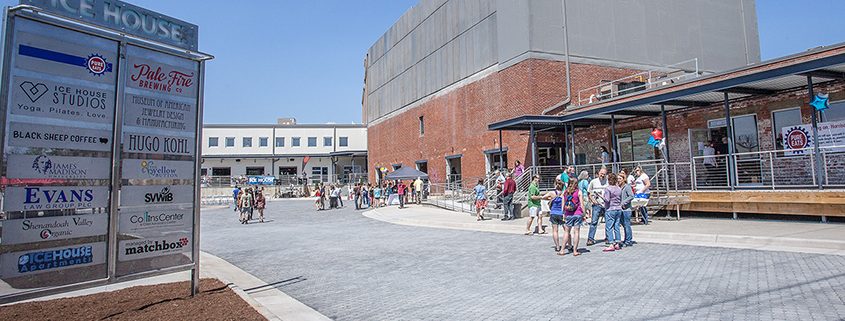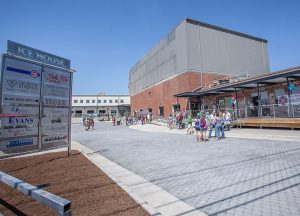
The Virginia General Assembly’s Joint Subcommittee to Evaluate Tax Preferences met recently to review reforms of various tax credits offered by the state, one of which is the Historic Rehabilitation Tax Credit (HRTC). Kathy Frazier, along with representatives from the Virginia chapter of the American Institute of Architects, Preservation Virginia, and the Associated General Contractors of Virginia, addressed the Subcommittee to reinforce the valuable role the HRTC program has played in revitalization of historic buildings and communities across the state. Statewide, city planners, developers and downtown representatives are chiming in to add their support for retaining the tax credits. Articles can be found at:
http://www.richmond.com/business/local/article_6189b9e2-6612-5e95-893f-3aeeb11c3a92.html

Using historic rehabilitation tax credits, the former Casco Ice House in downtown Harrisonburg, VA was rehabbed to house apartments, office space, retail, restaurants and a brewery.
Created in 1996, Virginia’s Historic Rehabilitation Tax Credit program is one of the most effective incentives for preservation and revitalization of the state’s vast stock of historic structures. According to a study by Virginia Commonwealth University in 2013, over $3.9 billion has been invested through the Historic Rehabilitation Tax Credit program since 1996 resulting in the rehab of over 2,375 historic buildings throughout Virginia. The projects stimulated the economy in general, creating an estimated 31,000 jobs and generating $133 million in local and state tax revenue. State tax credits amount to 25 percent of total rehabilitation costs. When combined with the 20 percent Federal tax credit, this incentive makes many projects more financially feasible for property owners throughout Virginia. https://preservationvirginia.org/press-room/release/vcu-study-finds-historic-preservation-contributes-to-virginias-economy-by-u
Frazier Associates has been assisting property owners with design and application for historic tax credit projects since the program’s inception. The firm has witnessed the benefits of this valuable tool for historic preservation of both commercial and residential properties in communities large and small across the Commonwealth. Staunton and Harrisonburg have particularly benefited with visionary developers investing millions in downtown buildings. Examples of some of these projects can be found on our website at https://frazierassociates.com/services/architecture/historic-rehabilitation-historic-tax-credits/
Learn More about the Tax Credits
Kathy Frazier recently presented a webinar to the Virginia Main Street community, “Credits Where Credits Are Due: Bringing Historic Tax Credits to Main Street” which explained how use of the tax credits can not only enhance the appearance of Main Street but can encourage further economic development in Virginia’s downtowns. Key points of the presentation included:
- How credits can be used to attract and incentivize downtown investment
- How to navigate the state and federal historic tax credit process
- A breakdown of the design guidelines of the Secretary of the Interior’s Standards for Rehabilitation
- Highlights of successful downtown tax credit projects in Virginia Main Street communities.
To see the webinar, click here: 2016 Tax Credit Webinar
Support Virginia’s Historic Rehabilitation Tax Credits!
The AIA Virginia is a strong supporter of Virginia’s Historic Rehabilitation Tax Credit, noting “not only does the HRTC have a proven track record for stimulating economic growth through private investment, it helps to preserve Virginia’s cultural heritage for future generations”. The AIA, along with a coalition of twelve other organizations, are working to educate legislators on the benefits of the program in an effort to keep the credits in place. To find out more about this effort go to: https://www.aiava.org/advocacy_news/historic-rehabilitation-tax-credit-threatened/
Contact Frazier Associates for more information about the state and federal historic rehabilitation tax credits, and to see if your building might qualify.














